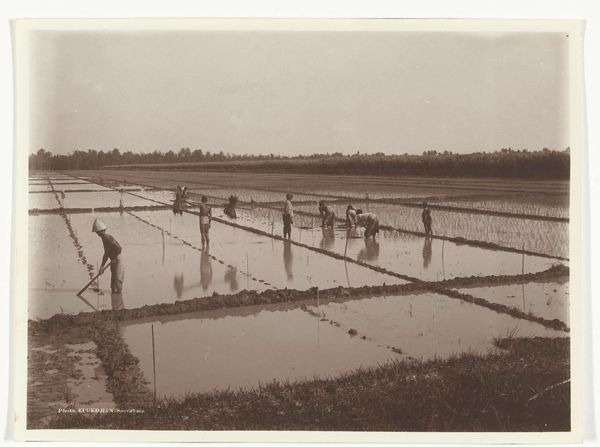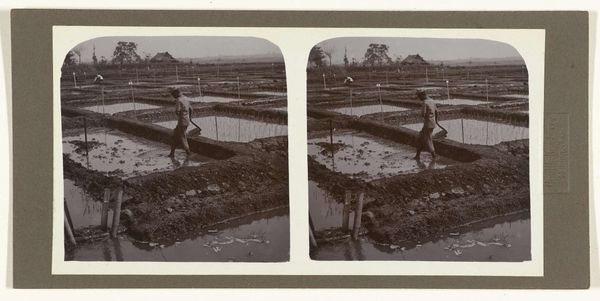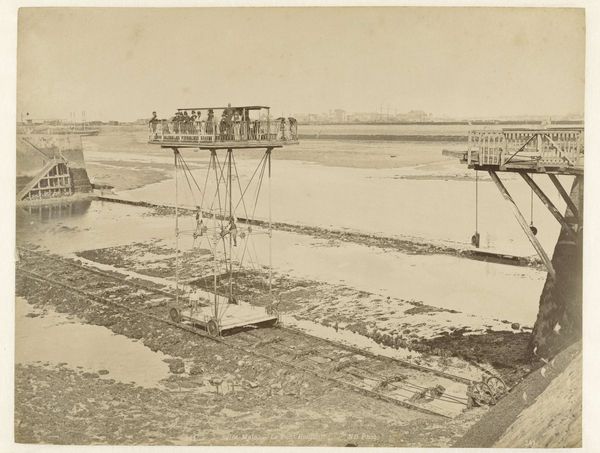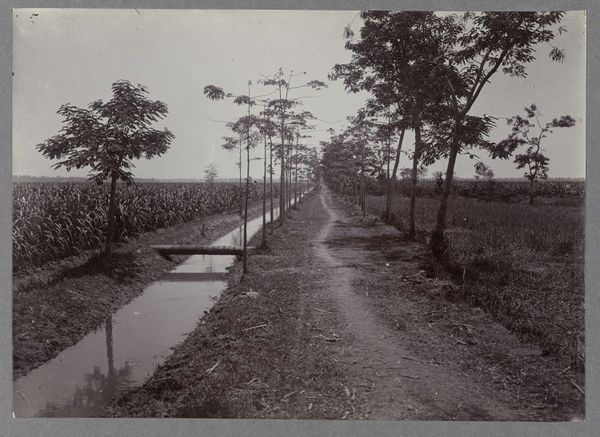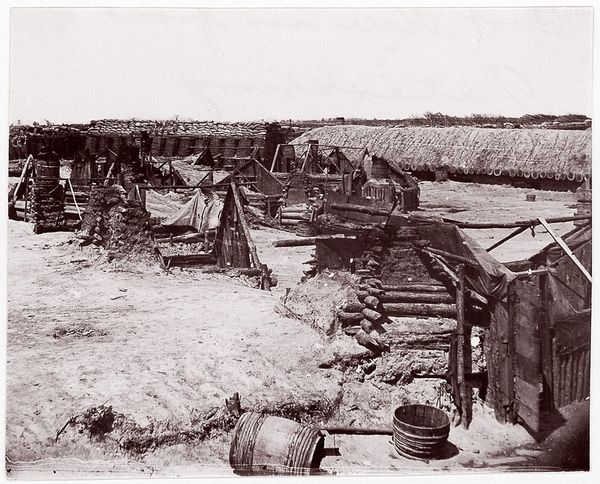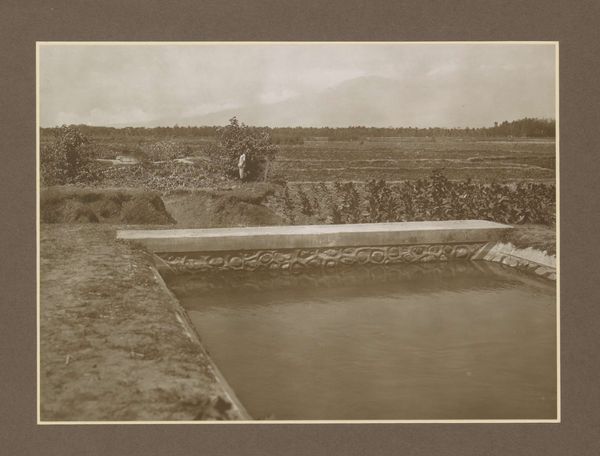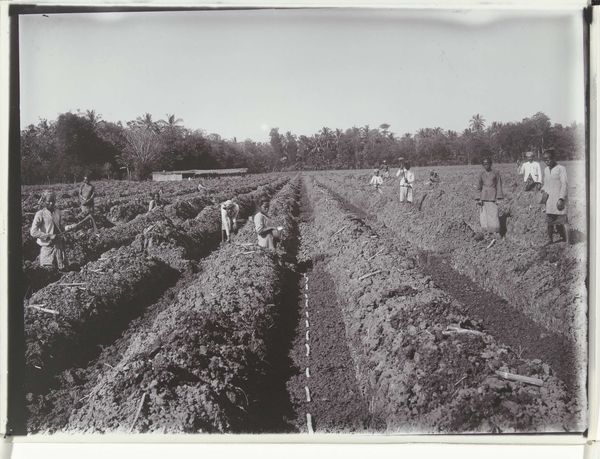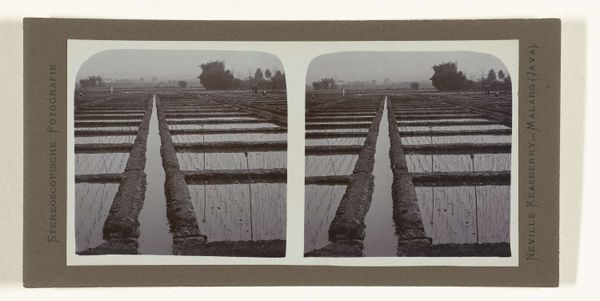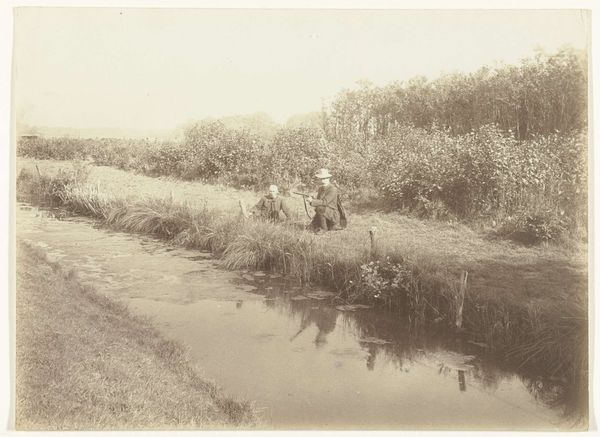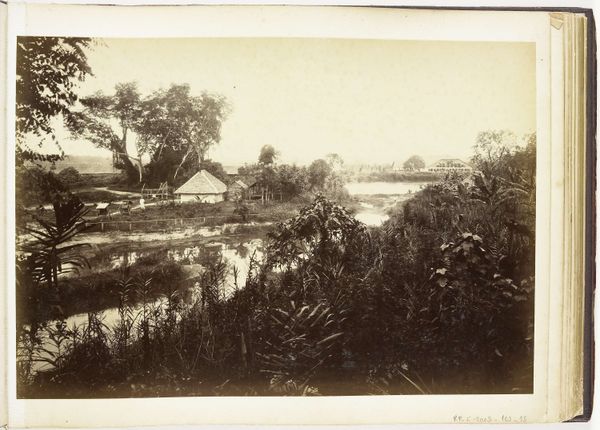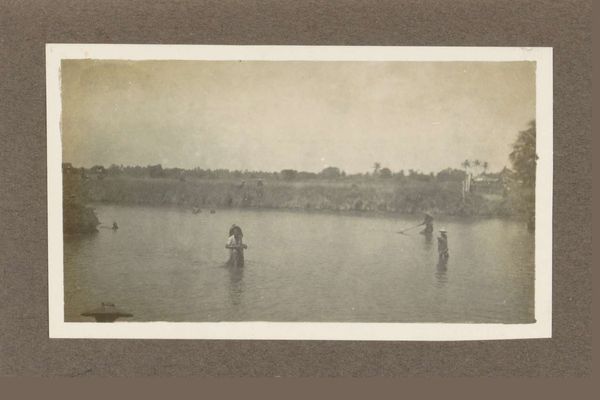
photography, gelatin-silver-print
#
african-art
#
dutch-golden-age
#
landscape
#
outdoor photograph
#
archive photography
#
photography
#
gelatin-silver-print
#
monochrome photography
#
genre-painting
#
realism
#
monochrome
Dimensions: height 175 mm, width 232 mm
Copyright: Rijks Museum: Open Domain
Editor: This gelatin silver print, taken around 1912 by Onnes Kurkdjian, depicts land workers toiling in rice paddies in what was then known as the Dutch East Indies. It's strikingly austere; the monochromatic palette and the figures almost dissolving into the landscape create a sense of… distant observation. What underlying stories or symbolic significance can we draw from such an image? Curator: The monochrome is fascinating; it abstracts the reality, transforming the scene into a tableau of human labor against nature. The reflection of sky on the water mirrors the labor, making it difficult to distinguish which sustains which, echoing the interconnectedness of human effort and nature’s provision. The lines in the water: notice them; what are they, in a psychological sense? Editor: You mean the dividing lines in the rice paddies? They're literal divisions of land, but perhaps symbolically represent a structured system of control, a imposed order. Curator: Precisely. Look closer at how these parallel lines diminish to the horizon. The rice field becomes a metaphor: not merely a landscape of sustenance, but a stage upon which power dynamics are subtly displayed, creating a feeling of tension and control. Each bending worker a symbolic posture. It begs a critical interpretation of colonization. Editor: That's a potent way to look at it. It shifts the reading from a pastoral scene to something far more complex – an archive of labour but also a mirror to an uncomfortable historical narrative. I hadn't considered the visual language through such an acutely critical lens. Curator: Every photographic choice embeds a cultural stance, a way of seeing that carries its own story and ideology. We have been primed to read beauty into landscapes, ignoring the embedded colonial gaze. Considering symbolic potential unlocks its fuller message. Editor: It really changes my initial perspective; I was caught up in the visual calm, not recognising this work's intricate visual arguments, especially concerning land, labour, and colonial legacy. Curator: And I see again how photography freezes our collective memory in single frames. A new appreciation.
Comments
No comments
Be the first to comment and join the conversation on the ultimate creative platform.
